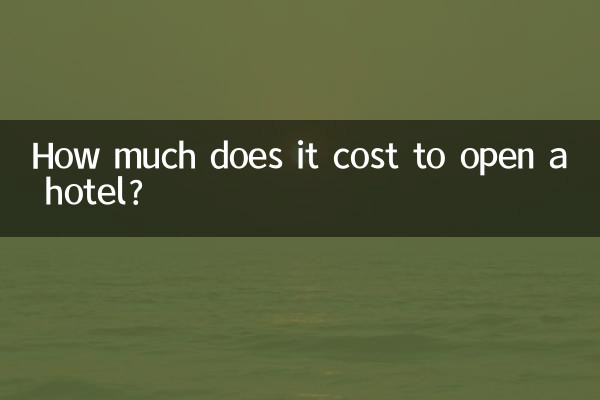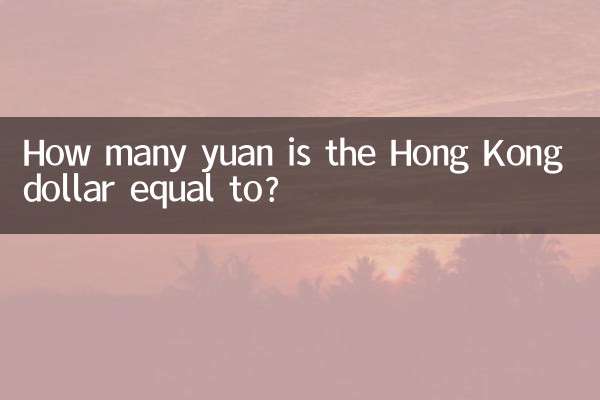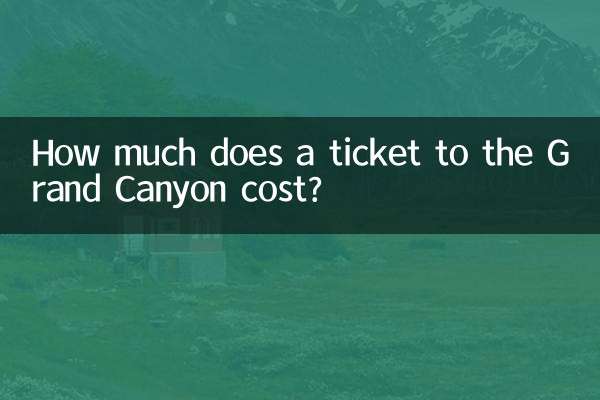How much does it cost to open a hotel? Hot topics and cost analysis on the entire network in the past 10 days
Recently, the hotel industry has once again become the focus of entrepreneurs and investors. As the tourism industry recovers and consumption upgrades, the cost, operating model and return cycle of opening a hotel have become hot topics. This article will combine the popular discussions on the Internet in the past 10 days to conduct a structured analysis of the core costs of opening a hotel, and attach relevant data comparisons.
1. Inventory of hot topics in the past 10 days

According to the popularity of discussions on social media and industry forums, the following topics have received the most attention:
| hot topics | Related keywords | Discussion popularity (index) |
|---|---|---|
| Budget hotel return on investment | Franchise fee, payback period | 8,500+ |
| Location strategy for mid- to high-end hotels | business district, traffic flow | 6,200+ |
| Hotel operating costs after the epidemic | Labor and energy consumption | 5,800+ |
2. Analysis of the core costs of opening a hotel
The cost of opening a hotel varies greatly depending on the type, size and location. The following is a cost comparison of mainstream hotel types:
| Hotel type | Single room cost (yuan) | Total initial investment (reference) | Payback cycle |
|---|---|---|---|
| Economical type (such as Hanting, 7 Days) | 50,000-80,000/room | 3 million to 8 million (50 to 100 rooms) | 3-5 years |
| Mid-range business (such as All Seasons, Atour) | 100,000-150,000/room | 8-20 million (80-120 rooms) | 5-7 years |
| High-end/resort (such as Hilton, Marriott) | 200,000-500,000/room | 30 million+ (more than 100 rooms) | 8-12 years |
3. Key factors affecting costs
1.property cost: Rent or home purchase costs in first-tier cities may account for more than 50% of the total investment; 2.decoration cost: The decoration cost of budget hotels is about 800-1,200 yuan/㎡, and that of high-end hotels is over 3,000 yuan/㎡; 3.Brand franchise fee: Chain brands usually charge management fees (5-10% of revenue) + one-time franchise fee (100,000-500,000); 4.operating costs: Labor (accounting for 20-30% of revenue) and energy consumption (8-15%) are the bulk of long-term expenses.
4. References to recent hot cases
1.Budget hotel in a third-tier city: The total investment is 4.5 million yuan, the average daily price is 180 yuan, the occupancy rate is 75%, and the return is expected to be 4.2 years; 2.Mid-range hotels in new first-tier cities: Franchise fee + investment of 12 million in decoration, improving square footage efficiency through the "hotel + coffee" model; 3.Transformation of internet celebrity B&B: Some owners have upgraded individual B&Bs to brand franchises to reduce customer acquisition costs.
5. Industry Trends and Suggestions
Judging from recent discussions,cost controlandDifferentiated positioningis the key to success. The popularity of asset-light franchise models (such as OYO) has declined, while the focus on theme hotels with cultural characteristics has increased. Investors are advised to: - Prioritize second-tier provincial capitals or tourist cities; - Reduce labor costs through intelligent equipment (self-service check-in, robot delivery); - Pay attention to government subsidy policies (some regions have tax incentives for the hotel industry).
Note: The above data is based on public reports, industry white papers and platform discussions. Actual investment needs to be combined with specific project evaluations.

check the details

check the details